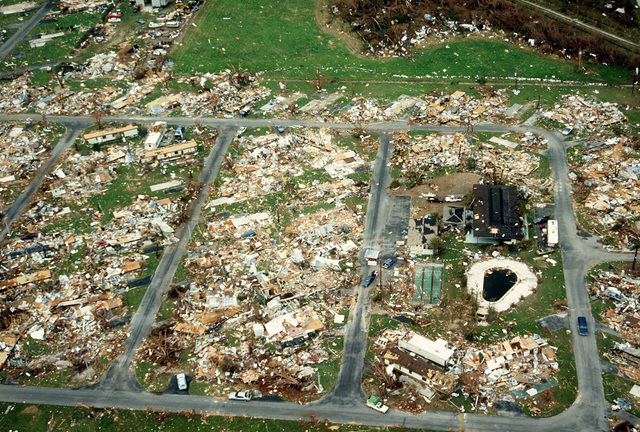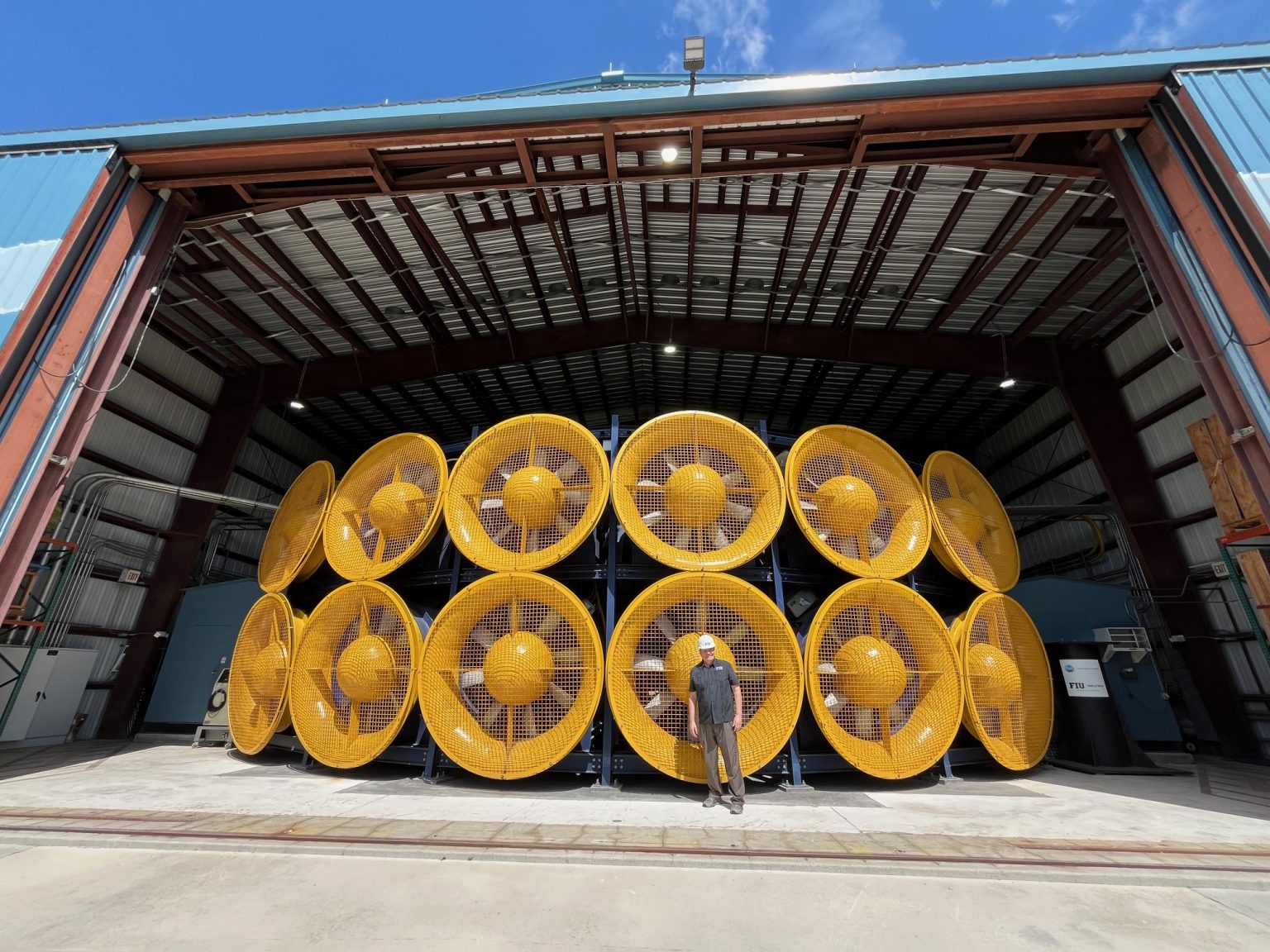As Tropical Storm (née hurricane) Beryl heads toward a Texas landfall, some background on storms vs. engineering from 99% Invisible, June 18:

On the campus of Florida International University, in Miami, there’s a place ominously named “The Extreme Events Institute.” They map the risk of storm surge for the whole Caribbean, and study how the public perceives the threats from natural disasters. They’re also home to the International Hurricane Research Center. Their hangar houses a dozen giant yellow fans, stacked in two rows of six. Each fan is six feet in diameter. They were originally made for ventilating mining shafts, but engineers here have figured out how to get them to make hurricane-strength winds. This is a lab where researchers are figuring out how we can make our homes and infrastructure survive hurricanes better, especially at a time when more intense storms are going to be more frequent.

Meteorologist Erik Salna stands in front of the twelve fans that help create hurricane strength winds at the Wall of Wind. Salna is Associate Director of Education and Outreach for the Extreme Events Institute (EEI) and the International Hurricane Research Center. (photo by Alana Casanova-Burgess)
Hurricane Andrew made landfall in 1992, just south of downtown Miami. It had sustained winds of 165 miles per hour, destroying at least 50,000 homes – ripping some of them right off their foundations. It was the costliest disaster in US history at the time. Meteorologists designated Hurricane Andrew a “Category 5” storm. It’s the highest classification according to the scale used for measurement, “The Saffir Simpson Hurricane Wind Scale.” For 50 years, the Saffir-Simpson Scale has been the language we all rely on to understand what kind of risk a hurricane poses. We’re primed to hear the category vocabulary in emergencies....
....MUCH MORE